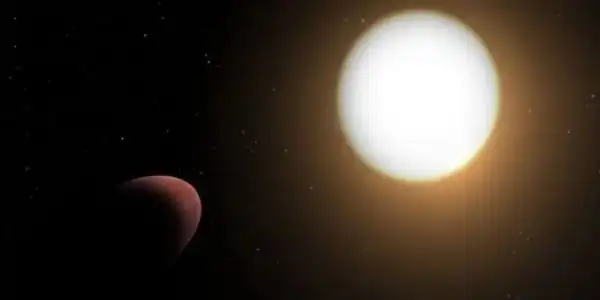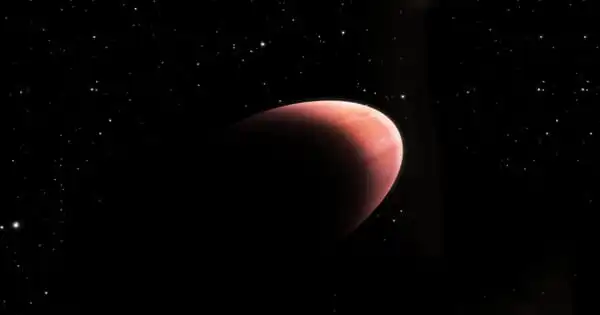An international team of researchers from the Universities of Bern and Geneva, as well as the National Centre of Competence in Research (NCCR) PlanetS, was able to detect the deformation of an exoplanet for the first time using the CHEOPS space telescope. Because of strong tidal forces, the planet WASP-103b resembles a rugby ball rather than a sphere.
The rhythm of events on the coast is determined by the tides. Boats remain on land at low tide; at high tide, the path out to sea is cleared for them again. The moon is the primary cause of tides on Earth. Its gravitational pull causes an accumulation of water in the ocean region below, which is then missing in surrounding areas, resulting in low tide. Although this ocean deformation causes significant differences in level in many places, it is barely visible from space.
The tides on WASP-103b are much more extreme. The planet orbits its star in a single day and is so deformed by the strong tidal forces that it resembles a rugby ball. This is demonstrated by a new study published today in the scientific journal Astronomy & Astrophysics by researchers from the Universities of Bern and Geneva, as well as the National Centre of Competence in Research (NCCR) PlanetS. This discovery was made possible by observations made with the CHEOPS space telescope. CHEOPS is a European Space Agency (ESA) and Swiss-led mission led by the University of Bern in collaboration with the University of Geneva.
We had suspected that the planet’s large tides were caused by its close proximity to its star. However, we had not yet been able to confirm this.
Professor Yann Alibert
A groundbreaking measurement
WASP-103b is a planet in the constellation Hercules that is nearly twice the size of Jupiter, has one and a half times the mass of Jupiter, and is approximately fifty times closer to its star than Earth is to the Sun. “We had suspected that the planet’s large tides were caused by its close proximity to its star. However, we had not yet been able to confirm this” Yann Alibert, professor of astrophysics at the University of Bern and member of the NCCR PlanetS, explains the study’s co-author.
The planet had already been observed by the NASA/ESA Hubble Space Telescope and NASA’s Spitzer Space Telescope. These observations, combined with the high precision and pointing flexibility of CHEOPS, allowed the researchers to measure the tiny signal of the planet’s tidal deformation from light years away. They did this by taking advantage of the fact that the planet dims the star’s light slightly each time it passes in front of it. “We were able to measure the deformation after observing several such so-called “transits.” It’s incredible that we were able to complete this analysis; it’s the first time such a study has been conducted “Babatunde Akinsanmi, co-author of the study and NCCR PlanetS associate, reports from the University of Geneva.

The planet is inflated
The findings of the researchers allow for conclusions not only about the shape of the planet, but also about its interior. This is due to the team’s ability to derive a parameter known as the “Love number” (named after the British mathematician Augustus E. H. Love) from WASP-103b’s transit light curve. It shows how the planet’s mass is distributed and thus provides information about its internal structure. “The resistance of a material to deformation is determined by its composition,” Akinsanmi explains.
“We can only see the tides on Earth in the oceans. The rocky part doesn’t move that much. Therefore, by measuring how much the planet is deformed, we can determine how much of it is made up of rock, gas or water.”
WASP-103b’s Love number is the same as Jupiter’s, our Solar System’s largest gas giant. It implies that the internal structures of WASP-103b and Jupiter are similar, despite the fact that WASP-103b is twice as large. “In theory, a planet 1.5 times the mass of Jupiter should be about the same size. As a result, WASP-103b must be highly inflated as a result of heating from its nearby star, as well as possibly other mechanisms “Monika Lendl, professor of astronomy at the University of Geneva and co-author of the study, agrees.
However, because the measurement uncertainty in the Love number remains quite high, future observations with CHEOPS and the James Webb Space Telescope will be required to decipher the details of WASP-103b’s tidal deformation and internal structure, as well as that of comparable exoplanets. “This would improve our understanding of these so-called ‘hot Jupiters,’ allowing us to better compare them to other giant planets in the Solar System,” Lendl concludes.





